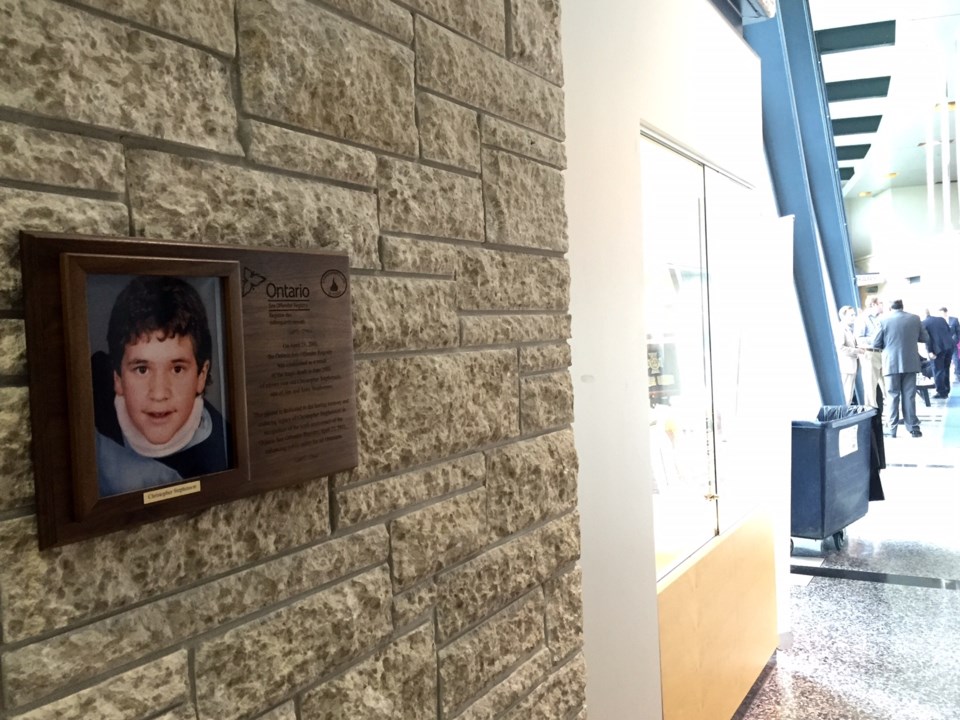ORILLIA — The handsome, bright face of 11-year-old Christopher Stephenson stares out from a plaque on the wall at OPP headquarters in Orillia.
The plaque is dedicated to the "lasting memory and enduring legacy of Christopher Stephenson" to mark what was the tenth anniversary of Ontario's Sex Offender Registry in 2011.
Just steps away inside the auditorium, Christopher's father, Jim, sits quietly in the audience Thursday as enhancements to Ontario's Amber Alert system are discussed.
Father's Day weekend in June marks 28 years since Christopher was abducted, sexually assaulted and murdered by a convicted sex offender in Brampton.
Stephenson was asked to attend the Orillia conference to endorse the alarm system that didn't exist when Christopher was taken in 1988.
"It's another look at protecting children," he said. "And I guess if there's any one family who has been impacted by the loss of a child it's our family."
Jim and his wife Anna have a hard-earned credibility by turning their grief to fighting to protect other children from predators and adding their voices to numerous community safety initiatives.
In 1993, a coroner's inquest into Christopher's death recommended creating a national registry for convicted sex offenders, one that would require them to register with local police.
A province-wide registry was established in Ontario in 2001, becoming the first in the country.
The legislation that created the registry was named "Christopher's Law."
A national registry was established in 2004.
Stephenson gets frustrated when he hears complaints that Amber Alerts are intrusive and annoying on television and radio.
Experience has taught him to be patient with these important programs — especially when it comes to technology.
"If we step back a bit — if the sex offender registry had been created in 1992 in response to the inquest — it probably would have been a collection of file papers stored in a three ring binder because technology wasn't able to support the registry as it was ten years later. The Amber Alert program is going through some similar growing pains. Bear with it. It's going to improve. "
So much has changed since Christopher was abducted and sometimes Jim can't help but ask 'what if' the Amber Alert system had been in place in 1988.
Would Christopher's disappearance have qualified for an Amber Alert?
Stephenson posed that question to some conference delegates this week.
"Because Christopher was taken. Certainly descriptors were available of the suspect and Christopher's safety was in question, so yes it would have qualified as an Amber Alert case," he said.
Improvements to the Amber Alerts are coming, according to the main stakeholders of the program.
As a father who has suffered the worst loss any parent could, Stephenson delivered this message to delegates about the Amber Alerts system.
"The thing I wanted to get across that it relies so much on technology and technology is ever-evolving. Technology is improving daily and that a lot of the glitches that are appearing today will be corrected."



